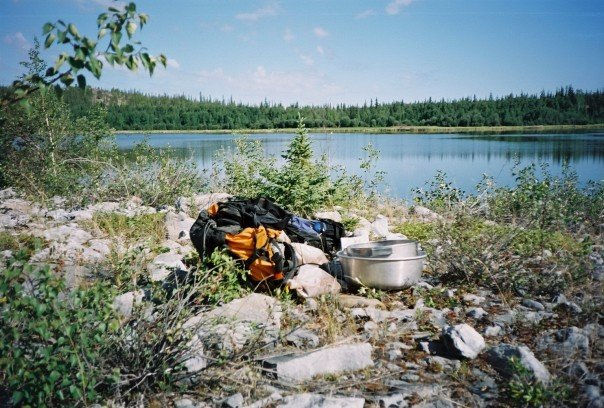Difficult Bass - The beginning of a Potential Copper-Gold Porphyry Story
- Diana M. Benz, Ph.D.

- Aug 12, 2022
- 3 min read
Probably one of the most difficult areas I’ve explored is the Bass Copper-Gold Porphyry Project northeast of Fort St James in central north-eastern British Columbia. Not difficult in terms of terrain, but technically challenging in that it is almost completely covered by basaltic lava that flooded that area between 31 and 1.1 million years ago. There is very little soil development with the remaining soil and vegetation predominately disturbed by logging. The creeks and streams tend towards pools and marshy areas with little to no streambed to sample. So this is the ultimate test for tree sampling!

The Bass Project (available for option) sits on a donut-shaped, high amplitude aeromagnetic anomaly coincident with a regional VTEM conductive core approximately 60 kilometres southwest of the Mount Milligan copper-gold alkalic porphyry mine. Geoscience BC’s Central Interior Copper-Gold Research Project by Mitchinson et al. (2022) marked this area as target FSJ8 indicating a low density, magnetic target thought to be syenite or monzonite. A historical Mobile Metal Ion (MMI) survey revealed a couple spot anomalies for copper while regional geological survey stream and lake sediment samples returned moderate copper values.
Why tree sampling? Traditional soil sampling requires the development and accurate identification of horizons or identification and access to basal till as well as sometimes creative interpretations related to ice directions, hydromorphic effects, response ratios, dispersal fans, gravity, type of surficial material etc. Tree sampling, however, requires species and tissue identification.
Mature pine trees can move between 10 and 150 gallons of water per day with an average movement of 1.83 metres per hour. The water typically moves from roots to tips leaving behind important elements for health and growth as well as storing excess or unwanted elements in shoots (Spring new growth), bark (long term storage) or leaves (elements are ‘excreted’ by dropping to the ground) since most plants do not have easy ways to rid themselves of certain elements like copper and gold.
The water the tree uses can contain elements concentrations accessed through transported overburden and porous/fractured rock cover by secondary geochemical mobility processes including dissolution of water soluble phases in the groundwater, electrochemical dispersion (the upward movement of electrons in the sulfide body results from electrochemical gradients between the underlying reducing to overlying oxidizing environments), cyclical dilatancy pumping along fractures and faults (e.g., earthquakes, flooding, etc.) and supercedency (successive wet/dry cycles).

Lawie (2007) Exploration Geochemistry – Basic Principles & Concepts Soil Geochemistry. Exploration ’07. Page 67. https://www.appliedgeochemists.org/images/stories/Exploration_07/D_Lawie.pdf
Can trees capture copper-gold porphyry chemical signatures directly over potential deposits through basaltic lava cover and till? Assays are pending.
About the Author:
Dr. Diana Benz has over 25 years of experience working in the mineral exploration industry searching for diamonds and metals in a range of roles: from heavy minerals lab technician to till sampler, rig geologist, project manager and business owner/lead consultant. She has a Bachelor of Science in General Biology, a Master of Science in Earth Sciences researching diamond indicator mineral geochemistry and a PhD in Natural Resources and Environmental Studies using geochemical multivariate statistical analysis techniques to interpret biogeochemical data for mineral exploration. Diana has conducted field work in Canada (BC, NWT, YT and ON) as well as in Greenland. She has also been involved, remotely through a BC-based office, on mineral exploration projects located in South America, Africa, Eurasia, Australia and the Middle East. Currently, Diana is the owner of Takom Exploration Ltd., a small geological and environmental firm focused on metal exploration in BC and the Yukon.







Comments